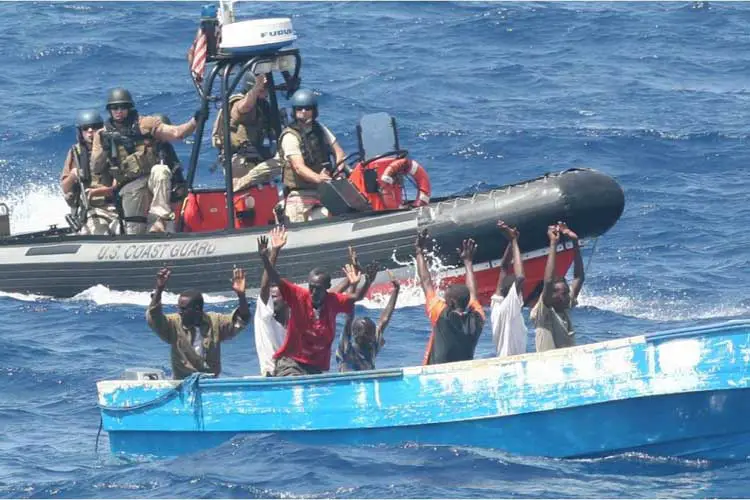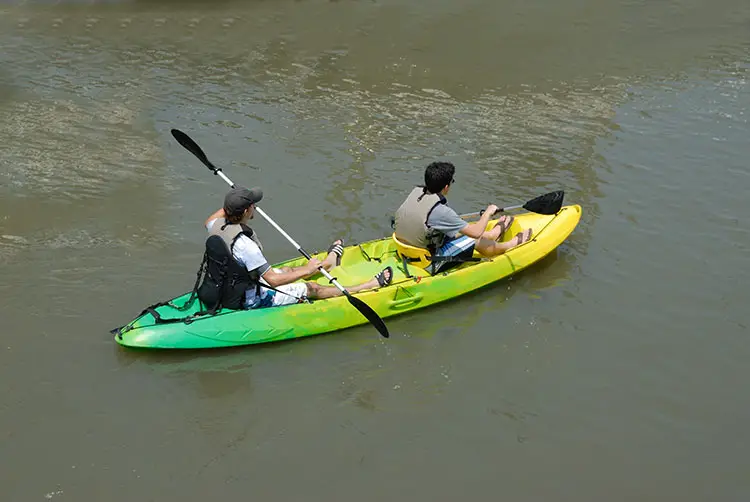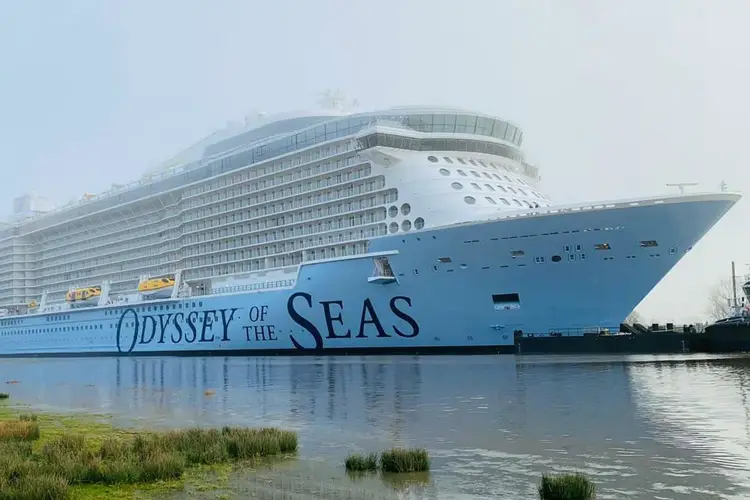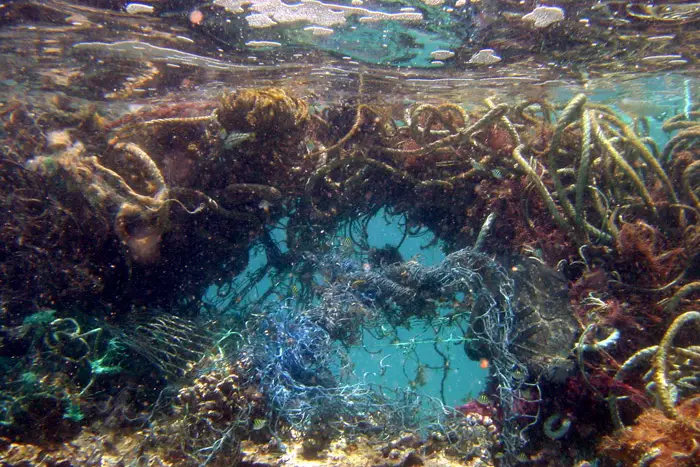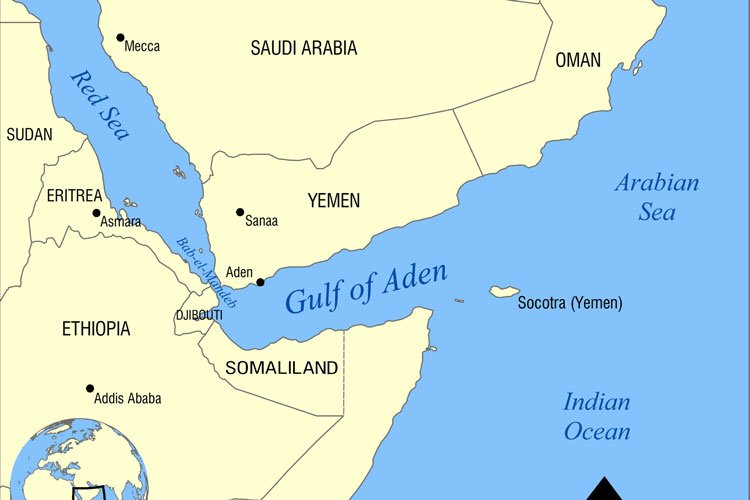Caspian Sea: All You Need To Know
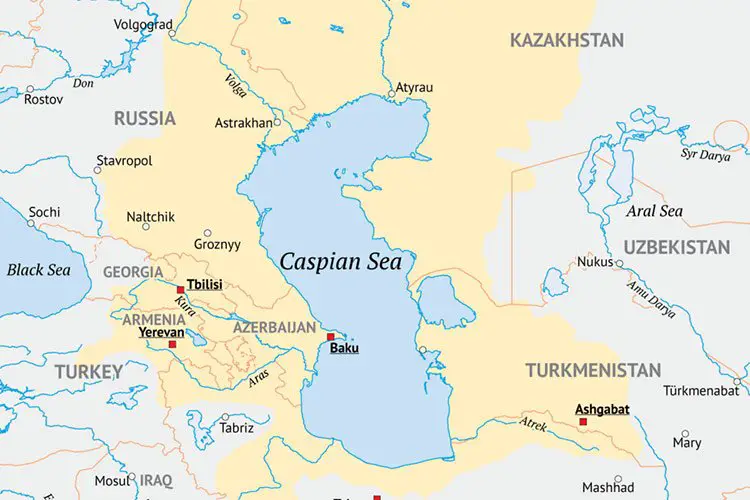
The Caspian Sea is the largest inland water body in the world located between Europe and Asia. It can be called the world’s largest lake or a fully developed sea. The surface area of the sea is 389,000kmᒾ including the lagoon of Garabogazköl and the average width is 300km. It shares its boundary with 5 countries – Russia, Kazakhstan, Turkmenistan, Iran, and Azerbaijan.
The Caspian Sea has turned out to be of great significance. Its strategic importance is due to the umpteen amount of energy resources available in it. There are various oil and natural gas projects in the region. This gave rise to economic, political, and geographical disputes between the boundary countries over the distribution of the resources. Several political issues are still going on between the countries.
Apart from the political and geopolitical aspects, the sea is home to many species and its ecosystem is a notable factor. The other major features and characteristics to look out for are its geography, history, economy, etc.

Interesting Facts About Caspian Sea
We will now look upon some of the interesting facts of the Caspian Sea in detail. They are as follows.
1) Different names of the Caspian Sea
An ancient tribe called Caspi lived to the southwest of the sea and the water body was named the Caspian.
There is an alternate theory also behind the name. A city in Iran, named Qazvin is also similar to the name of the sea. In the olden times, the Caspian Sea was also known as “Bahr Qazwin” meaning Sea of Qazvin which is a traditional Arabic name for the sea. Many experts opine that this gradually got changed to Caspian.
Here are the various names of the Caspian Sea in different languages.
a) Kazakhistan
In Kazakh, the sea is called Kaspiy teñizi
b) Kyrgyzstan
In Kyrgyzstan’s language, it is called Kaspiy denizi
c) Uzbekistan
and in Uzbekistan’s language, it is Kaspiy dengizi.
d) Turkmenistan
In Turkmen, it is called Hazar deňizi
e) Azerbaizan
In Azerbaijani, it is called Xǝzǝr dǝnizi.
f) Turkey
In Turkish, it is called Hazar denizi.
g) Persia
In ancient Persia, which is presently known as Iran, the sea is referred to as Darya-e-Khazar. It is named after Khazar which is an ancient Turkic nomadic tribe. The people from countries like Azerbaijan, Turkmenistan, and Turkey refer to these using its Khazar or Hazar name.
h) Russia
In modern Russian, it is called Kaspiyskoye More and in Old Russian, it was called Khavlyn or Khavlis Sea based on the name of Khwarezmia, which is a large oasis area on the Amu Darya river delta located in western Central Asia.
Here, the first term is related to the Khazars who had established a large empire in the north of the sea during the 7th and 10th centuries; the second term means ‘sea’.
In the period of 8th century BC to 6th century AD, the sea was known as the Hyrcanian sea (Hyrcania) by the Greeks and Persians.
The earliest settlement remains found around the sea were from Dmanisi which is a town in Georgia. Various skeletal remains of Homo erectus and Homo ergaster were also found in the region. Later, several caves in Georgia and Azerbaijan also gave evidence of human settlement around the sea. There is evidence of Lower Paleolithic human habitation to the South of Caspian and Neanderthal remnants in Georgia caves.
The discoveries from the caves in Iran suggest that the human settlement in the area was about 11,000 years ago. Ancient Greeks also preferred to settle around the sea at the south shore.
Fedor. I. Soimonov was the first person to explore the sea and he made a modern map of the sea with much better measurements and physical features.
Also read: Interesting facts about the Black Sea
3) The Caspian Sea is the largest inland water body in the world
The sea covers 389,000kmᒾ including the area of the Lagoon of Garabogazköl. The distance from north to south is around 1,200km and the average width is 300km. The average depth of the sea is 211m.
The sea was not landlocked in earlier times. It became landlocked around 5.5 million years ago. This happened due to the tectonic uplift and reduction in mean sea level. Tectonic uplift is the geographical phenomenon in which there is the upliftment of the Earth’s surface or the changes in the structure of the Earth’s crust.
Due to these alterations in geology, the sea came to be formed from the remains of Paratethys Sea. Thus, today the sea is landlocked from all sides and the only source of water is few inflow rivers.
The Volga river which is the largest river in Europe discharges in the Caspian Sea and it contributes up to 80% of water to the sea.
Hence it is an endorheic basin, which means that there is no outflow from the body and it retains its water.
As it is the largest inland water body, it makes up 40 to 44% of the lake waters of the world.
4) 2nd lowest natural depression on Earth
The sea is varying in depth from an average depth of 211m to a maximum depth of 1025m. The surface lies about 27m below sea level.
The southern seabed of the sea is 1023m below sea level and that is why it is the 2nd lowest natural depression in the world, only next to Lake Baikal. Lake Baikal is 1,186.5m below sea level and stands as the lowest natural depression on Earth.
The Caspian Depression, which is a flat lowland region surrounding the northern part of the Caspian Sea lying 22m below sea level is one of the lowest points on the planet.
5) Geography of the Caspian Sea
As we earlier learned, the Caspian Sea is the largest inland water body on the planet. The countries around its coastline are Azerbaijan, Iran, Kazakhstan, Russia, and Turkmenistan. The coastline of the sea is 6,820km long.
The Caspian is divided into three physical regions namely the Northern, Middle, and Southern basins. These three regions are different from each other in consideration of their geography and physical characteristics.
a) Northern Basin
The Northern region of the Caspian includes only the Caspian shelf. It is very shallow and the average depth ranges from 5 to 6 meters only. It covers less than 1% of the total volume of the water in the sea but covers almost 25% of the total surface area of the sea. It spans 91,942 sq km.
b) Central Basin
The Middle region is deeper than the northern part. The average depth here reaches up to 190 m while the maximum is 788 m. It accounts for 34% of total water volume. It spans 137,812 sq km.
c) Southern Basin
The Southern part is the deepest with the depth going to a maximum of 1,025 m whole the average depth is 345 m. This southern region accounts for most of the water volume of the sea, which is 66% and has a surface area of 148,646 sq km.
Due to the differences in the depth, the salinity of the water also changes a lot. The Caspian sea is little saline. Since most of the rivers pouring into the Caspian Sea are in the North or the West, the salinity increases from North to South and East to West. The waters around the mouth of the tributaries are the least saline as expected.
The Caspian Sea has an inflow of more than 130 rivers. The major inflow river is the Volga river and the second largest inflow is from the Ural river followed by the Kura River which flows into the sea from the west. There are many small islands in the sea and the largest island is the Ogurja Ada.
There are Central Asian grassland plains across the northeast coast and the habitat in the north and eastern region is featured by cold, continental deserts. There are Caucasus mountains on the western shore. Due to these extreme climatic conditions, the biodiversity in the Caspian has bloomed substantially.
6) Flora and Fauna of the Caspian region
a) Flora
The Aquatic vegetation reduced as the level of the Caspian sea increased from 1994 to 1996.
b) Fauna
Fauna in the Caspian sea is the major biodiversity point in the ecosystem of the sea.
There are two distinctive trophic systems. The north part is inhabited by freshwater fish which have adapted to the salty water. They subsist on the organic material brought by the rivers and surrounding area.
The southern part is more marine in nature but is not truly oceanic.
The Caspian turtle is a completely freshwater species that are found in the surrounding areas of the sea. The species that are native to the sea are Zebra mussel, six types of fish species like the Russian, Bastard, Persian, sterlet, stary, and beluga. Beluga is one of the largest freshwater fish in the world. There are over 160 native species and subspecies of fishes.
Also, there are various endemic species. Endemic species means the species that are found only in that particular region. The endemic species found in the Caspian Sea are the Caspian seal which is the only aquatic mammal present in the sea, different species and subspecies of fishes, and lagoon cockles.
Various species of sturgeon like Russian sturgeon, Persian sturgeon, sevruga sturgeon, and great Russian sturgeon are also present in the Caspian Sea which are fished for their flesh and roe. The roe is then processed to make Caviar which is famous all around the world.
Some archaeological studies say that the present dolphins and whales are smaller in size than the ones which were present in earlier times.
The problem that arose was the depletion of fish species due to overfishing in the sea. Overfishing is for the famed Caviar business. This endangered the reproductive female fish species of sturgeons.
7) Economic impact of the Caspian Sea
The economy of the countries surrounding the sea extensively depends on the mineral and energy resources mainly oil and gas available from the Caspian sea. All the regions are highly dependent on the mineral wealth of the sea. All these countries are substantially developed in solar energy and hydroelectricity sources.
Iran is the second-largest producer of crude oil in the world. It has reserves of 137.5 billion barrels of crude oil and generates around 4 million barrels per day. The estimated amount of natural gas in Iran is about 988.4 trillion cubic feet. This is about 16% of world reserves.
As per 2015 data, the economy of Russia is ranked 12th largest by nominal GDP and 6thlargest by PPP. The Caspian Sea’s huge amount of petroleum resources made Russia the 2nd largest producer of oil and natural gas in the world.
On 12 August 2019, the first Caspian Economic Forum was summoned. It is the platform for discussion over issues of investment projects for the countries around the Caspian Sea.
8) Caspian sea: A treasure trove Oil & Gas
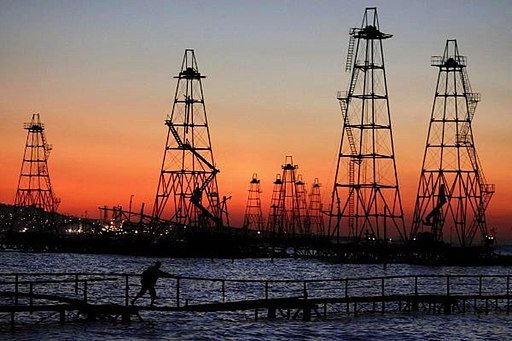
The Caspian Sea is a treasure trove of oil and natural gas. The coastline countries highly depend on it for their prosperity and economic development. Kazakhstan’s total oil production in 2013 was about 1.64 million barrels a day. It accounts for 55% of the state’s oil output.
The first offshore wells and machine drilled wells in the world were made in Baku. Baku is the capital city of Azerbaijan. It is the largest city of Azerbaijan as well as the largest city on the Caspian Sea.
It became the main center of the international oil industry in the early 20th century. In the late 19th century Baku came to be known as the “Black gold capital” which attracted many skilled and specialist workers to the place. Azerbaijan accounts for about 20% of the state’s oil output.
In December 2015, Russia produced an average of 10.83 million barrels of oil per day. Thus Russia accounts for 12% of the world’s oil.
As of 2001, the Caspian Sea’s output was 1.4 to 1.5 million barrels a day, in addition to natural gas. As of 2013, the oil output of the region reached about 2.5 billion barrels a day.
9) Political issues
Due to its rich oil and gas reserves. the Caspian Sea obviously has become the backbone of the economies of the countries surrounding the lake. As expected, this led to some political and geostrategic issues in the region among the countries.
After the collapse of the Soviet Union, the oil reserves were thrown open to private players. Thus, international investments increased as many oil companies got attracted to the region by the black gold.
There are disputes between Azerbaijan maritime borders with Turkmenistan and Iran.
Another big controversy is over the Trans-Caspian oil and gas pipelines. The landlocked countries, namely, Turkmenistan, Kazakhstan, and Azerbaijan are dependent on Russia for oil supply routes to other countries.
The proposed Trans-Caspian Gas pipeline will reduce Russia’s influence as these countries will be able to bypass Russia completely. Hence, the project is strongly opposed by Russia. The project will make oil transportation very efficient as it will allow western markets to have easy access to Kazakh oil and to some extent to Uzbek and Turkmen gas also. Recently, Turkmenistan and Kazakhstan have shown support to the project.
As every country tries to gain as much profit from mineral resources of the sea, disputes between them continue to simmer.
10) Transportation
Baku, the capital city of Azerbaijan is the largest port of the Caspian Sea. Many large vessels such as oil tankers dock at this port. The Baku trade port and the Caspian Shipping company are significant for the transportation of Azerbaijan.
The increase in oil production in Baku was the key trigger for the development of shipping in the Caspian sea. Hence the transportation infrastructure needed to be improved in Baku.
There are two fleets in addition to shipyards in the Caspian shipping company. Almost 51 vessels, 20 tankers, 13 ferries, and many other types of vessels are under this transport fleet.
11) Negotiations and meetings on the Caspian Sea
The negotiations for the demarcation of the sea have been going on for nearly a decade now. All the surrounding countries are not able to decide over the property claims. The negotiations for access to mineral sources, access to fishing, and so on are continuing.
These 5 countries have maintained naval forces in the sea in their particular areas.
There are tensions between Azerbaijan and Iran and also tensions between Azerbaijan and Turkmenistan are going on over the oil fields regions. Azerbaijan sent vessels into the disputed region for exploration and they came under fire from Iranian patrol boats. these are not isolated events and have become common.
Hence, in 2007 there was a meeting which allowed the coastal countries ships’ to enter the sea. The negotiations between the countries were going on from 1990 to 2018.
12) The legal status of the sea – Lake or Sea?
The Caspian Sea’s legal status is very confusing. A lake is a large water body surrounded by land and a sea is a large saltwater body that is larger than a lake and is often connected to an ocean. The Caspian sea fits accurately in both the descriptions. Hence, this dilemma of sea or lake is a matter of discussion.
The answer to the seemingly simple question carried a great economic and strategic import.
There have been a series of bi-lateral treaties between the Soviet Union and Iran which recognized the Caspian Sea as a lake and as a consequence, the resources should be divided equally between them.
On the other hand, the United Nations Group of Experts on Geographical Names recognizes the water body as a sea which means that the full maritime boundaries of the five countries would be based upon an equidistant division of the sea and undersea resources into national sectors. Under this, countries would have exclusive rights only to resources lying within 45 nautical miles of their shore. It will also mean that international maritime laws will be applicable in the Caspian Sea.
There have been disputes over this thing between the 5 countries.
A special working group was formed to decide the legal status of the sea and to decide the rights of each country over it. The Caspian summit that took place in 2018 decided that 24km of territorial water will belong to each neighboring country. Additionally, 16km access will be given for fishing rights on the surface, while the rest will be considered as international water.
The seabed remained undefined and thus the Caspian Sea is still legally neither completely a sea nor a lake.
13) World-famous Caviar

The sea is home to various species and subspecies of fishes. Apart from being widely known for oil production, the Caspian Sea is also well known for its Caviar. The sturgeon caviar is highly-priced for about US$880 per Kg and is found in the Caspian Sea. These sturgeon fish yield roe which is then processed into caviar.
This caviar is a big name when it comes to luxurious food. Hence, the Caspian sea is also known for its caviar production.
These were some of the interesting facts about the Caspian Sea. The points mentioned above are the chief factors of the sea.
Which one of these did you find interesting?
Pic courtesy: https://commons.wikimedia.org/wiki/File:CaspianSeaDrainage_v1.png

